So far it is been eye candy from heaven: The black
vastness of space teeming with enigmatic, unfathomably distant blobs of light.
Ghostly portraits of Neptune, Jupiter, and other neighbors we thought we knew.
Nebulas and galaxies made visible by the penetrating infrared eyes of the James
Webb Space Telescope.
اضافة اعلان
The telescope, named for James Webb, the
NASA administrator
during the buildup to the Apollo moon landings, is a joint project of NASA, the
European Space Agency, and the Canadian Space Agency. It was launched on
Christmas one year ago — after two trouble-plagued decades and $10 billion — on
a mission to observe the universe in wavelengths no human eye can see. With a
primary mirror 21 feet wide, the Webb is seven times as powerful as the Hubble
Space Telescope, its predecessor. Depending on how you do the accounting, one
hour of observing time on the telescope can cost NASA $19,000 or more.
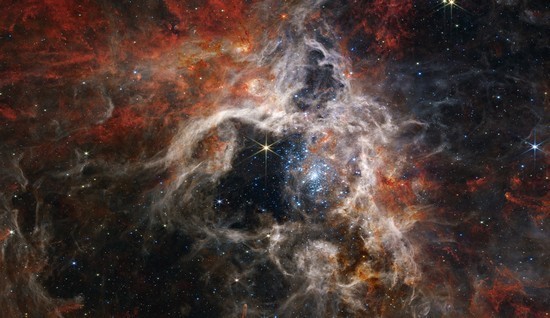
But neither NASA nor the astronomers paid all that money and
political capital just for pretty pictures — not that anyone is complaining.
“The first images were just the beginning,” said Nancy Levenson, temporary
director of the Space Telescope Science Institute, which runs both the Webb and
the Hubble. “More is needed to turn them into real science.”
A bright (infrared) futureFor three days in December, some 200 astronomers filled an
auditorium at the institute to hear and discuss the first results from the
telescope. An additional 300 or so watched online, according to the organizers.
The event served as a belated celebration of Webb’s successful launch and
inauguration and a preview of its bright future.
One by one,
astronomers marched to the podium and, speaking
rapidly to obey the 12-minute limit, blitzed through a cosmos of discoveries:
Galaxies that, even in their relative youth, had already spawned huge black
holes. Atmospheric studies of some of the seven rocky exoplanets orbiting
Trappist 1, a red dwarf star that might harbor habitable planets. (Data
suggests that at least two of the exoplanets lack the bulky primordial hydrogen
atmospheres that would choke off life as we know it, but they may have skimpy
atmospheres of denser molecules such as water or carbon dioxide.)
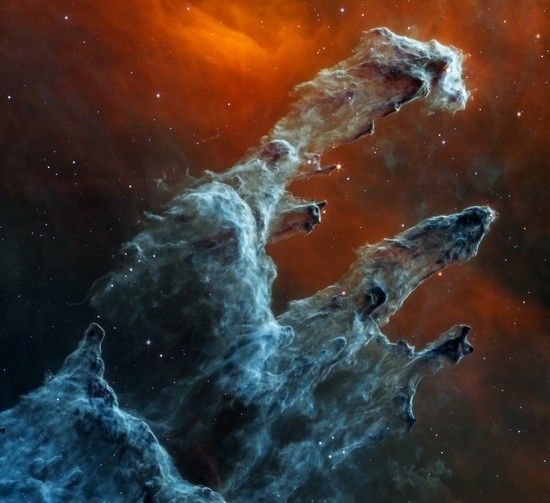
Between presentations, on the sidelines, and in the hallways,
senior astronomers who were on hand in 1989 when the idea of the Webb telescope
was first broached congratulated one another and traded war stories about the
telescope’s development. They gasped audibly as the youngsters showed off data
that blew past their own achievements with the Hubble.
Jane Rigby,
project scientist for operations for the telescope,
recalled her emotional tumult a year ago as the telescope finally approached
its launch. The instrument had been designed to unfold in space — an intricate
process with 344 potential “single-point failures” — and Rigby could only count
them, over and over. “I was in the stage of denial,” she said in Baltimore. But
the launch and deployment went flawlessly. Now, she said, “I’m living the
dream.”
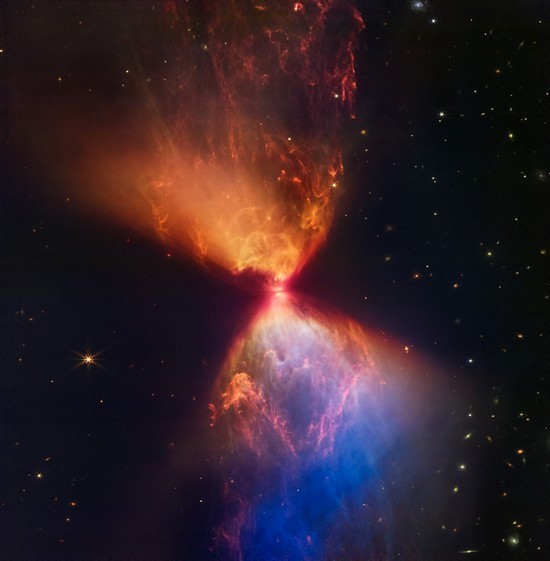
Garth Illingworth, an astronomer at the University of
California, Santa Cruz, who in 1989 chaired a key meeting at the Space
Telescope Science Institute that ultimately led to the Webb, said simply, “I’m
just blown away.”
At a reception after the first day of the meeting, John Mather
of NASA’s Goddard Space Flight Center and Webb’s senior project scientist from
the start, raised a glass to the 20,000 people who built the telescope, the 600
astronomers who had tested it in space and the new generation of scientists who
would use it.
“Some of you weren’t even born when we started planning for it,”
he said. “Have at it!”
Wayback machineThus far the telescope, bristling with cameras, spectroscopes,
and other instruments, is
exceeding expectations. (Its resolving power is twice
as good as advertised.) The telescope’s flawless launch, Rigby reported, has
left it with enough maneuvering fuel to keep it working for 26 years or more.
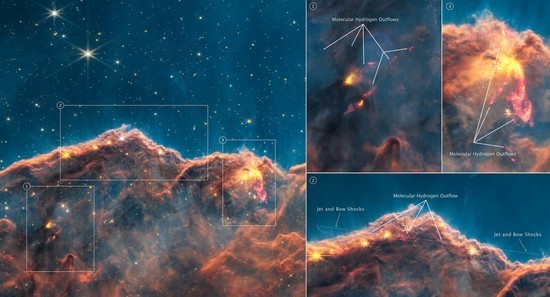
“These are happy numbers,” she said as she and her colleagues
rattled off performance statistics of their instruments. Rigby cautioned that
the telescope’s instruments were still being calibrated, so the numbers might
yet change.
Perhaps the biggest surprise from the telescope so far involves
events in the early millenniums of the universe. Galaxies appear to have been
forming, generating and nurturing stars faster than battle-tested cosmological
models estimated. “How did galaxies get so old so fast?” asked Adam Riess, a
Nobel physics laureate and cosmologist from Johns Hopkins University who
dropped in for the day.
Exploring that province — “cosmic spring,” as one astronomer
called it — is the goal of several international collaborations with snappy
acronyms like JADES (JWST Advanced Deep Extragalactic Survey), CEERS (Cosmic
Evolution Early Release Science), GLASS (Grism Lens-Amplified Survey From
Space) and PEARLS (Prime Extragalactic Areas for Reionization and Lensing
Science).
Webb’s infrared vision is fundamental to these efforts. As the
universe expands, galaxies and other distant celestial objects are speeding
away from
Earth so fast that their light has been stretched and shifted to invisible,
infrared wavelengths. Beyond a certain point, the most distant galaxies are
receding so quickly, and their light is so stretched in wavelength, that they
are invisible even to the Hubble telescope.
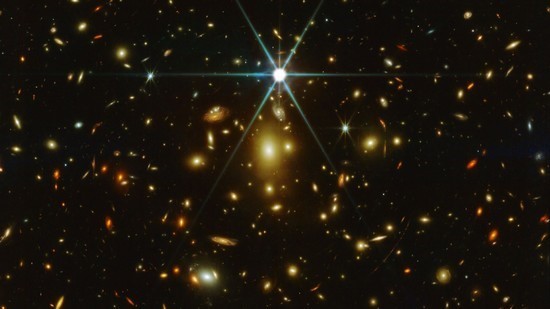
The Webb telescope was designed to expose and explore these
regions, which represent the universe at just 1 billion years old, when the
first galaxies began to bloom with stars. “It takes time for matter to cool
down and get dense enough to ignite stars,” noted Emma Curtis-Lake, of the
University of Hertfordshire and a member of the JADES team. The rate of star
formation peaked when the universe was 4 billion years old, she added, and has
been falling ever since. The cosmos is now 13.8 billion years old.
In the closing talk, Mather limned the
telescope’s history, and
praised Barbara Mikulski, a former senator of Maryland, who supported the
project in 2011 when it was in danger of being canceled. He also previewed
NASA’s next big act: a 12-meter space telescope called the Habitable Worlds
Observatory that would seek out planets and study them.
“Everything that we did has turned out to be worth it,” he said.
“So we are here: This is a celebration party, getting a first peek at what’s
out here. It’s not the last thing we’re going to do.”
Read more Technology
Jordan News



